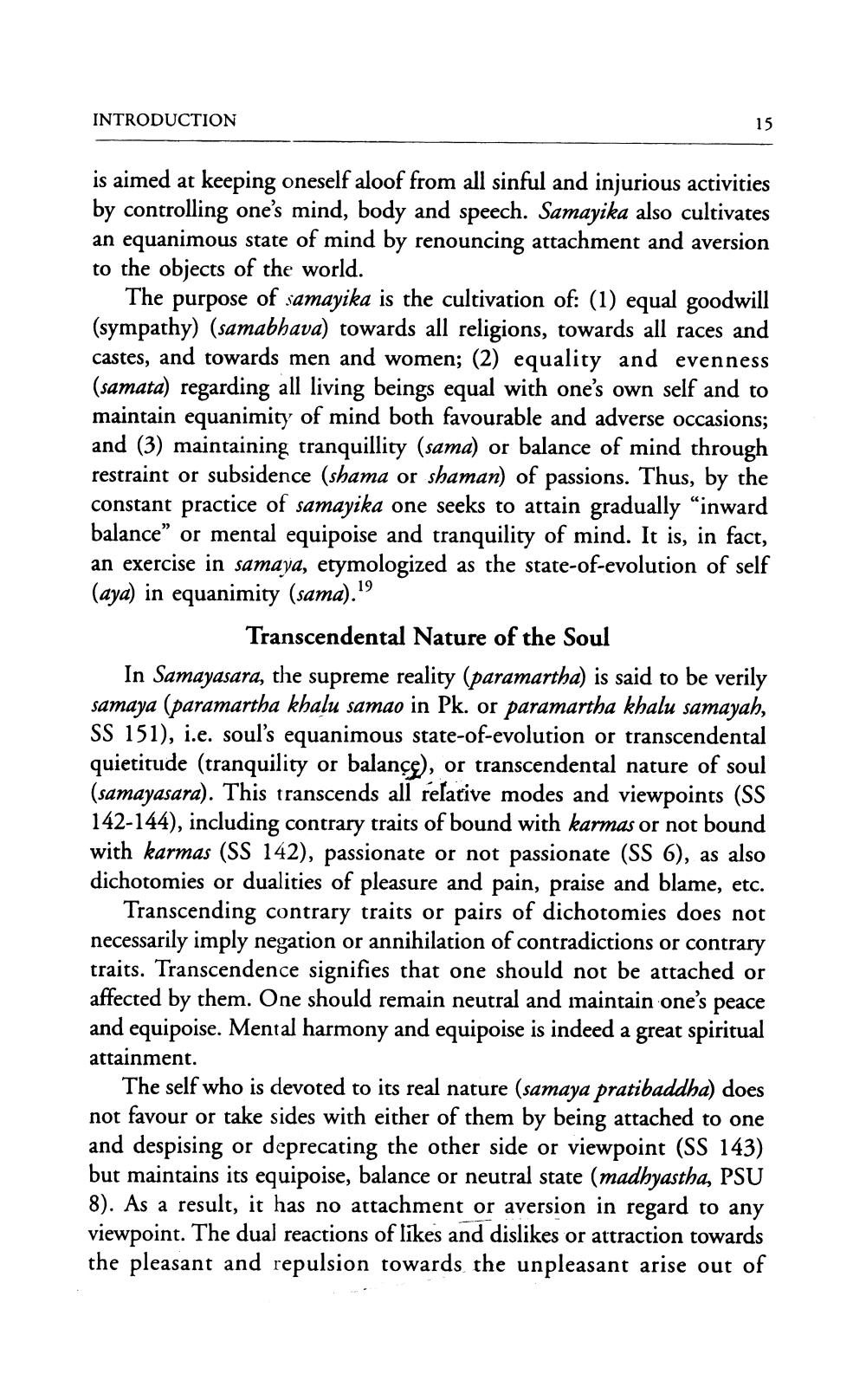________________
INTRODUCTION
15
is aimed at keeping oneself aloof from all sinful and injurious activities by controlling one's mind, body and speech. Samayika also cultivates an equanimous state of mind by renouncing attachment and aversion to the objects of the world.
The purpose of samayika is the cultivation of: (1) equal goodwill (sympathy) (samabhava) towards all religions, towards all races and castes, and towards men and women; (2) equality and evenness (samata) regarding all living beings equal with one's own self and to maintain equanimity of mind both favourable and adverse occasions; and (3) maintaining tranquillity (sama) or balance of mind through restraint or subsidence (shama or shaman) of passions. Thus, by the constant practice of samayika one seeks to attain gradually “inward balance” or mental equipoise and tranquility of mind. It is, in fact, an exercise in samaya, etymologized as the state-of-evolution of self (aya) in equanimity (sama)."
Transcendental Nature of the Soul In Samayasara, the supreme reality (paramartha) is said to be verily samaya (paramartha khalu samao in Pk. or paramartha khalu samayah, SS 151), i.e. soul's equanimous state-of-evolution or transcendental quietitude (tranquility or balançę), or transcendental nature of soul (samayasara). This transcends all relative modes and viewpoints (SS 142-144), including contrary traits of bound with karmas or not bound with karmas (SS 142), passionate or not passionate (SS 6), as also dichotomies or dualities of pleasure and pain, praise and blame, etc.
Transcending contrary traits or pairs of dichotomies does not necessarily imply negation or annihilation of contradictions or contrary traits. Transcendence signifies that one should not be attached or affected by them. One should remain neutral and maintain one's peace and equipoise. Mental harmony and equipoise is indeed a great spiritual attainment.
The self who is devoted to its real nature (samaya pratibaddha) does not favour or take sides with either of them by being attached to one and despising or deprecating the other side or viewpoint (SS 143) but maintains its equipoise, balance or neutral state (madhyastha, PSU 8). As a result, it has no attachment or aversion in regard to any viewpoint. The dual reactions of likes and dislikes or attraction towards the pleasant and repulsion towards the unpleasant arise out of




